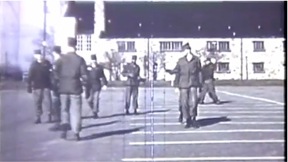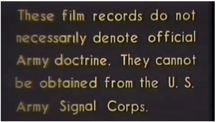Found in the Archives on NPR
posted December 8, 2010 1 Comment
![]()

Remsberg works on documentaries for PBS, National Geographic, the History Channel, museum exhibits, and independent films – as he puts it, he finds the vintage film footage and still photos that make historical documentaries historical.
Not surprisingly, he comes across much that his clients cannot use, but that cries out for bringing to attention. That was certainly the case with his first featurette, about a 1958 film of a US Army LSD test. In the short film, Effects of Lysergic Acid Diethylamide (LSD) on Troops Marching, some soldiers under the influence are put through drills, with predictably erratic results, that hippies rarely attempted.

The Army was looking for ways to incapacitate enemies with psychochemicals delivered in aerosol form. And how much less depraved war would be, after all, if your enemy drooled: “Hey, chill, dude. I love you, man.”
Not that Remsberg’s discovery of the film was all happy, for him. He writes: “I came across this film while working on a documentary on the history of biological warfare, a project that yielded a number of films and photos that were kind of tough to get my head around, some for their abject cruelty, some for their surrealism.”
His future subjects, Remsberg promises, will include the photo album of the Eugenics Building at the Kansas State Fair, 1957 newsreel on the rockabilly invasion of Japan, and the commissioned portraits John James Audubon made before he got into birds – portraits of humans, that is; and Audubon made some of them by digging up the buried bodies of his subjects, says Remsberg.
No wonder he notes on the NPR site: “Sometimes bemusing, sometimes fairly disturbing, these histories don’t always fit so easily into a tidy narrative, and I love them for the way they add dimension and complications to the conventional notions of history.”
Previous Post: Archive Coordinator Wanted
Next Post: ARSC Conference Travel Grants






GREAT!!!!!!!!!!!!!!!!!!!!!!!!!!!!!!!!!!!!!!!!!!!!!!!!!!!!